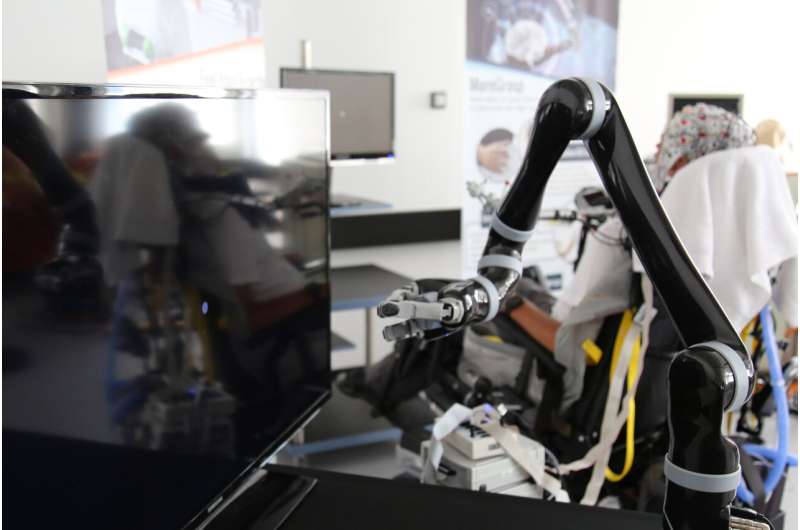
For the first time ever, the intention of a continuous movement was able to be read out from non-invasive brain signals at TU Graz. This success enables more natural and non-invasive control of neuroprostheses to be carried out in real time.
Intended to give paraplegic people back some freedom of movement and thus a better quality of life, so-called brain-computer interfaces (BCIs) measure the person’s brain activity and convert the electrical currents into control signals for neuroprostheses. “Controlling by thoughts,” as Gernot Müller-Putz puts it in simplified terms. The head of the Institute of Neural Engineering at Graz University of Technology (TU Graz) is an “old hand” of BCI research and is intensively involved with non-invasive BCI systems. He and his team have achieved initial positive results with EEG-based control of neuroprostheses or robotic arms in people with spinal cord injuries over the last ten years. However, until now the control was unnatural and cumbersome because the thought patterns had to be repeatedly imagined. As part of his recently completed ERC Consolidator Grant project “Feel your Reach,” Müller-Putz and his team have now achieved a breakthrough in the development of more natural and continuous BCI control systems.
It all comes down to seeing
The TU Graz researchers have succeeded for the first time in controlling a robotic arm purely by thought in real time in the usual non-invasive way using an EEG cap. This was made possible by decoding continuous movement intention from brain signals—something previously impossible. The researchers first examined a variety of movement parameters such as position, speed and distance, and extracted their correlates from the neuronal activity. “The contribution of the eyes is essential here,” says Müller-Putz. “It is important that users are allowed to use their eyes to follow the trajectory of the robotic arm.” However, eye movements and eye blinks generate their own electrical signals, so-called ocular artifacts in the EEG. “These artifacts distort the EEG signal. They therefore have to be removed in real time. However, it is essential that eye-hand coordination can take place and thus contribute to the decoding of movement requests,” Müller-Putz explains. In other words, the visual information helps to capture the intention to move. The unwanted signals of the eye itself, however, have to be filtered out of the electrical activity arithmetically.
BCI detects unwanted movements
It is also essential that one of the BCIs developed by the researchers is able to recognize whether a person wants to start a movement—it can recognize the start of a goal-oriented movement. In addition, another of the research team’s BCIs detects and corrects errors, i.e., unwanted movements of the robotic arm; one more piece of the puzzle for a more natural prosthetic control. “The brain’s error response can be read off from the EEG. The BCI recognizes that the movement performed does not correspond to the person’s intention. It stops the movement of the robotic arm or resets it to the beginning,” says Müller-Putz. In the project, the error detection was successfully tested several times in tests with spinal cord injured persons.
People can feel movements of the robotic arm
Source: Read Full Article
